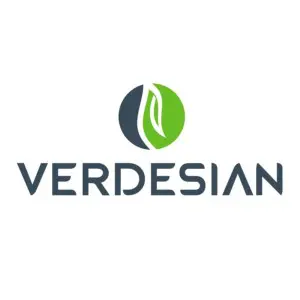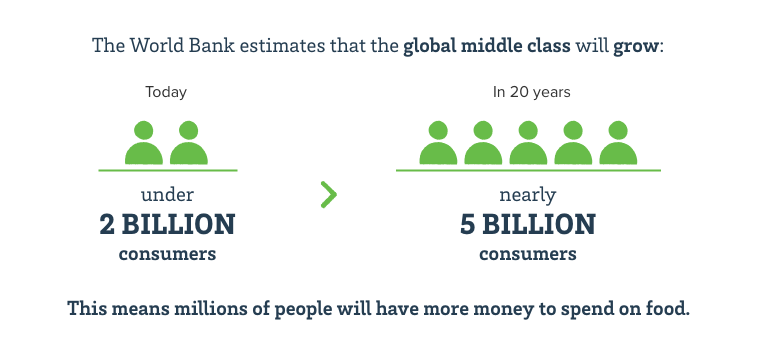Producers today must pay close attention to enhancing soil fertilizer efficiency, and focusing on plant uptake and utilization using enhanced efficiency fertilizer (EEF) technologies that limit nutrient loss and improve crop yields and quality.
Nutrients can be lost in a number of ways. Soluble nutrients like nitrates and potassium can be lost in runoff, drainage water and through leaching while less soluble nutrients like phosphorus are more likely to be lost with sediment movement in eroding soils.
Research has found that soluble polymer technology, whether used for phosphorus or nitrogen fertilizers, can reduce soil fixation of nutrients and keep more of them available for plants – reducing nutrient losses and optimizing your return on investment.
Using that research as a foundation, one of the best ways to ensure your operation is running as effectively as possible is by creating a nutrient use efficiency plan.
What is Nutrient Use Efficiency?
Nutrient use efficiency is simply a measure of how well plants use the available mineral nutrients. It can also be defined as yield per unit input (e.g., fertilizer, nutrient content, etc.)
Nutrient use efficiency is rooted in research-based, best management practices. However, there is no one-size-fits-all approach to implementing a successful strategy on a farm. It’s dependent on the type of crop, soil conditions, weather, irrigation and level of precision agriculture adopted on any given operation.
As is the case with most farming operations, decisions should be based upon data driven insights. In the case of optimizing crop nutrient use on-farm, that means looking at data insights from soil sampling, weather data, historical yield and input maps, and other information that helps provide a complete picture of an operation.
Using proven metrics for greater NUE
Verdesian is adopting a new set of metrics that specifically calculates the efficiency of nutrients used in your operation. Using these metrics, you’ll be able to benchmark your nutrient use efficiency, highlight any inefficiencies, make changes to your nutrient plan and improve your return on investment.
| NUE Term | Calculation | Reported Example |
|---|---|---|
| PFP Partial Factor Productivity |
Yield (Y) / Applied Nutrient (F) | Unit of yield per unit of nutrient |
| AE Agronomic Efficiency of applied nutrient |
(Y – Y0) / F | Unit of incremental yield per unit of nutrient |
| PNB Partial Nutrient Balance (Removal-to-use ratio) |
Uptake (UH) / F | Ratio of 0 to greater than 1 depends on narrative soil fertility and maintenance objectives |
| RE Apparent Crop Recovery Efficiency of applied nutrient |
(U – U 0) / F | Scale from 0.1 – 0.9 dependant on nutrient |
Here is an example of these metrics calculated with a nitrogen treatment:
| Treatment | Yield | Total N Uptake (U) | Grain Uptake (UH) | N Applied (F) | PFP | AE | PNB | RE |
|---|---|---|---|---|---|---|---|---|
| No N | 209.33 | 272.97 | 188.4 | 0 | – | – | – | – |
| 165lbs N | 230.09 | 300.03 | 207.08 | 165 | 78.1 | 7.04 | 1.26 | 0.113 |
| 165lbs N + Stabilizer | 237.2 | 309.31 | 213.48 | 165 | 80.5 | 9.46 | 1.29 | 0.152 |
Why is Nutrient Use Efficiency important?
There is a massive business opportunity rapidly developing for North American producers – the exploding middle class in countries like India and China.
The World Bank estimates that the global middle class will grow from under 2 billion consumers today to nearly 5 billion within two decades. This means millions of people will have more money to spend on food.
The importance of NUE is a critical factor to the sustainability of this growth. To keep our soil healthy and productive to meet this demand for generations to come, we need to manage the nutrients inside it.
According to Food and Agriculture Organization’s (FAO)’s 2006 guide for integrated nutrient management, nutrients added through fertilizers, manures and composts can have negative as well as positive effects on the environment depending on the operation’s integrated nutrient management plan. When done right, the guide concludes Nutrient Use Efficiency achieves the following:
- Nutrients removed from the soil through harvesting and export of produce can be largely replenished through various
types of recycling in order to maintain and enhance the production potential of the soil. - Eases the problem of erosion control on the cropped area because of the protection provided by a dense crop cover.
- Adds more organic matter through greater leaf residues, and root and stubble biomass.
- Greater nitrogen uptake by crops and less nitrate is leached down the profile for the pollution of groundwaters or
further loss through denitrification. - Promotes the correct management of all plant nutrient sources on the farm and helps reduce the losses of plant
nutrients to the environment.
All of these soil and environmental benefits of management systems ultimately lead to increased yields, which help growers create and maintain a sustainably profitable operation when commodity prices are low or unpredictable.
Implemented correctly, Nutrient Use Efficiency promotes the protection of valuable resources like water and soil, which in turn satisfies the growing consumer demand for food that is produced in an environmentally responsible way.
Nutrient Use Efficiency will also play an instrumental role as competition for land between food and energy sources increase in the years ahead.
Labor shortages in agriculture have already led to increased demand for “smart inputs” (e.g., nutrients, bio-stimulants and repellents in a single application) and increased mechanization.
The building blocks of NUE: The 4Rs of nutrient stewardship
The Fertilizer Institute along with their industry partners have developed a set of best practice guidelines that provide a scientifically-based framework to achieve cropping system goals, such as increased production, increased farmer profitability, enhanced environmental protection and improved sustainability.
The 4Rs of Nutrient Stewardship calls for the right fertilizer source applied at the right rate, at the right time and in the right place.
The 4Rs apply to growers around the world, but how they are used locally varies depending on field and site-specific characteristics such as soil, cropping system, management techniques and climate.
Right source
For more information about determining the right source, check out these Verdesian Groundwork blogs:
- https://vlsci.com/blog/with-nutritional-phosphites-quality-matters-for-stabilization
- https://vlsci.com/blog/fall-applied-phosphorus-cost-effective-and-convenient
- https://vlsci.com/blog/seed-treatments-expand-management-options
Right rate
For more information about determining the right rate, check out these Verdesian Groundwork blogs:
- https://vlsci.com/blog/investing-in-soil-health-pays
- https://vlsci.com/blog/too-much-of-a-good-thing
Right time
For more information about determining the right time, check out these Verdesian Groundwork blogs:
- https://vlsci.com/blog/crop-leftovers-can-eat-yield
- https://vlsci.com/blog/faster-emergence-for-early-season-planters
- https://vlsci.com/blog/making-the-most-of-your-soybean-inoculants
Right place
For more reading about determining the right place, check out these Verdesian Groundwork blogs:
- https://vlsci.com/blog/striking-a-balance-utilizing-subsurface-tile-drainage
- https://vlsci.com/blog/to-till-or-not-to-till
- https://vlsci.com/blog/cover-up-to-lock-nutrients-down
Putting nutrient use efficiency into practice
The 4Rs of nutrient stewardship simply provide a framework to assess whether a given crop has access to the
necessary nutrients. Asking the right question helps identify opportunities to improve fertilizer efficiency.
To put the 4Rs into practice requires patience, hard work and a strong belief in doing what’s right for the future of your farm – and future generations.
Utilizing trusted agronomists and retailers, nutrient use efficiency experts, and farm advisors is strongly recommended when developing a nutrient use efficiency strategy for your operation.
Overcoming 4 main challenges to implementing nutrient use efficiency
INVESTMENT OF TIME AND MONEY
Think big picture. While it does take more planning and investment up front, a solid nutrient use efficiency strategy for your farm will save you big input bucks in the future, make your yields larger and protect your land and water source.
RELUCTANCE TO ADOPTING NEW TECHNOLOGY
Just because it wasn’t done in the past, doesn’t mean it shouldn’t be done now. It’s always possible to outdo what’s always been done. Recent technological advancements have revolutionized agriculture and made it possible to optimize the growing cycle right down to the individual plant.
CUTTING THROUGH THE CLUTTER OF NEW FARMING SOLUTIONS
New agricultural products and technologies have exploded over the past decade, which can make it difficult for producers to decide what makes financial sense for their operation. Bypartnering with a nutrient use efficiency expert, you’ll ensure you’re getting the right advice and developing the right plan for your individual operation.
IMPLEMENTING IT ALL AT ONCE
Start small and expand slowly. You don’t need to introduce a comprehensive strategy for your entire operation all at the same time. Experiment with a particular crop or field and go from there. A smart plan is constantly changing and evolving as conditions change and new data becomes available.
Applying NUE to specific crops
While developing the correct strategy takes some work, the products and solutions developed by Verdesian Life
Sciences are designed to be easy to use and seamless to apply to your operation.
Recognizing that every strategy needs to be developed on a field-by-field basis, here’s a snapshot of some of the
nutrient management basics for some specific crops.
Corn
To maximize yield and crop quality, corn needs nutrients — especially nitrogen. But when it comes to
fertilizer, the rule of thumb is quality, not quantity. Too much applied potassium and nitrogen can get lost in the
soil. For optimal results in those critical growth stages (especially V6), nitrogen and potassium need efficiency
increases to improve plant metabolism or reduce fixation – and that’s where Verdesian’s products can help.
Read more about Verdesian’s solutions for corn
Cereals
Nitrogen, potassium and phosphorus are the three most important nutrients for successful growth in cereal crops. However, it isn’t enough to apply fertilizer and hope for the best — cereals can only take up so many nutrients, and any excess will simply be lost through fixation or leaching. By improving plant metabolism or reducing fixation, nutrient use efficiency products can help increase nutrient uptake and maximize the effectiveness of your inputs.
Read more about Verdesian’s solutions for cereals.
Pulses and soybeans
Pulses and soybeans produce most of their own nitrogen through rhizobium — a main reason why they’re commonly grown to help improve soil health. Inoculants can provide an added rhizobium boost for optimal growth, while nutrient use efficiency products can help ensure pulses and soybeans are getting adequate levels of other key nutrients.
Read more about Verdesian’s solutions for pulses and soybeans.
Vegetables
To maximize yield and quality, vegetable crops require intensive management, and growers must ensure soil is
well-drained, and that plants are receiving water with low salinity and the right balance of nutrients.
Read more about Verdesian’s solutions for vegetables.
Tree nuts
As the world’s largest producer of almonds and pistachios, the U.S. is a massive player in the global tree nut market. Nitrogen and potassium are key at different rates during all growth stages while phosphorus should be applied at flowering and post-harvest for strong root development and maintenance.
Read more about Verdesian’s solutions for tree nuts.
Potatoes
Because potatoes strive for a healthy number of packable tubers, nutrient management and agronomy are key. In fact, nitrogen deficiency is typically the number one cause of limited growth. In the first two growing stages, potassium helps enhance quality and size while phosphorus is also crucial when roots are close to the surface.
Read more about Verdesian’s solutions for potatoes.
Citrus
Citrus crops are both extremely sensitive to pests and disease and also very receptive to pest and disease management. A solid fertility plan that includes nutrient use efficiency products can give citrus crops the boost needed for healthy growth.
Read more about Verdesian’s solutions for citrus.
How Verdesian can assist in your NUE plan
Sharing and seeking out knowledge is crucial as you develop your management plan. At Verdesian, we’re committed to helping farmers improve crop performance, plant nutrition, water quality and soil health as they strive for the 4Rs of nutrient stewardship.
Verdesian has launched a number of new nutrient use efficiency technologies over the past year for both row crop and specialty crop growers along with a number of planned launches in 2018 and 2019. Consider adding any of these technologies to your plan:
- Row crops
AVAIL T5™ uses an all-new patented polymer technology to reduce the fixation of applied phosphorus, keeping more available for plant uptake, speeding early growth, and improving crop health and yield potential.
N-Charge G™ allows plants to more efficiently assimilate carbon and utilize nitrogen and other nutrients. The end result is enhanced nutrient use efficiency, leading to more bushels per acre per amount of nutrients applied.
Take Off LS™ is a nitrogen utilization and carbon assimilation technology that optimizes efficient plant nutrient acquisition, allowing for more efficient plant development, and better crop quality and yield potential.
- Specialty crops
AVAIL HV™ is a phosphorus efficiency technology for high-volume fertilizer applications designed to provide better nutrient access during early plant development, early season plant performance and crop quality potential.
works inside the plant to stimulate the efficient assimilation and utilization of nutrients and also functions as a reproductive growth catalyst that collectively stimulates, intensifies and optimizes plant metabolism.
Nutri-Phite® enhances nutrient uptake to improve plant health and vigor by slowing the oxidation of phosphorus, leading to increased yield potential.
- Row and specialty crops
MicroSync™ is a micronutrient and sulfur technology designed to improve micronutrient efficiency and soil fertility programs in row crops and vegetables.
You can learn more about all of our products, including what solutions will work best for your operation, at: https://vlsci.com/products/.















